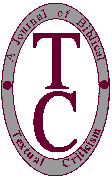
Note: Because of security concerns, the SP fonts are no longer available on the ftp://rosetta.reltech.org FTP site. However, they may be downloaded from this page using a Web browser.
The SP fonts (named for Scholars Press, my former, now defunct, employer) are a set of simple, free fonts that were created for use on the Web, though they also work in print. The design goals behind the SP fonts are (1) simple installation; (2) simple input of text, based on accepted transliteration standards; (3) use of common character maps for Macs and Windows computers. By creating these free fonts, it was my hope that scholars, students, and others could interchange multilingual text documents with one another as easily and inexpensively as possible. The fonts were originally designed for use in my e-journal, TC: A Journal of Biblical Textual Criticism, but they are now used on many different Web sites, as well as in print.
There are currently eight SP fonts available for use for non-commercial purposes (e.g., publicly accessible Web sites) by anyone who would like to download them; they may also be used in printed material. Anyone who wants to use the SP fonts in a commercial electronic product (online, CD-ROM, etc.) must get permission from Jimmy Adair, the copyright holder, prior to use. Three are Hebrew/Aramaic fonts: SPTiberian (a standard Hebrew font), SPDamascus (a thinner font with Palestinian as well as Tiberian vowel points), and SPEzra (a simple, fixed-width Hebrew font). There are two Greek fonts: SPIonic (a more complete Greek font) and SPDoric (a simpler, uncial font). Other fonts are SPEdessa (a Syriac Estrangela font), SPAchmim (a Coptic font), and SPAtlantis (a transliteration font that includes diacriticals and other special characters that allow the representation of numerous Indo-European, Semitic, and other languages--this font is available in both Roman and Italic type). All of these fonts are TrueType fonts, and each is available in both Macintosh and Windows formats. Each font also has associated with it a .readme file that explains the keyboard mapping of the font. The Michigan-Claremont encoding scheme is the basis for the character maps used in the Hebrew/Aramaic and Syriac fonts, and the Thesaurus Linguae Graecae encoding scheme is the basis for the Greek and Coptic fonts.
In the Mac directory, the fonts have been compressed using Stuffit and encoded in ASCII using BinHex (hence the .sit.hqx extension). Fonts in the Windows directory appear in uncompressed - .TTF, compressed (gzipped) - .TTF.gz, and zipped - .TTF.zip - forms. A gunzip utility, which is available in the Windows directory, must be used to uncompress the .gz files.
For more information on the encoding schemes mentioned above see Transliteration Tables for Use in TC.
We hope you can make good use of these fonts. Feel free to send any comments to Jimmy Adair.
Patrick Durusau, formerly my colleague in crime at Scholars Press was instrumental in the design and disseminatation of the SP fonts. The SP fonts are copyrighted, © James R. Adair, 2000. The fonts are also available from the Society of Biblical Literature.

